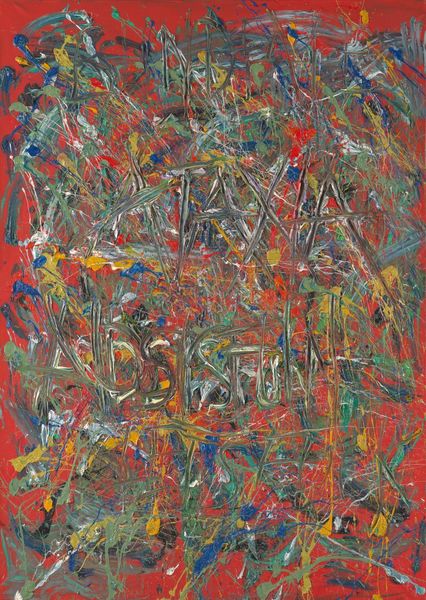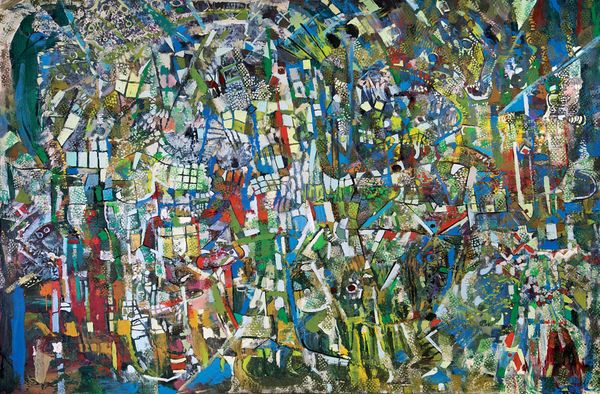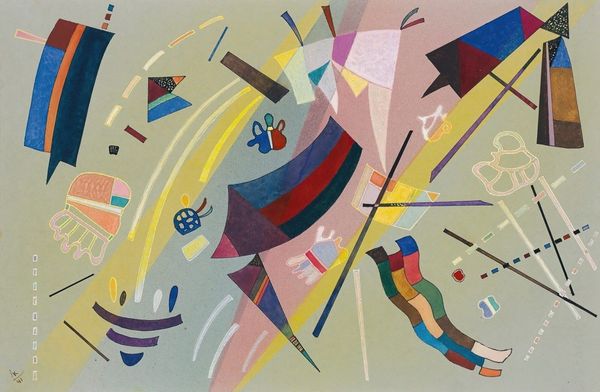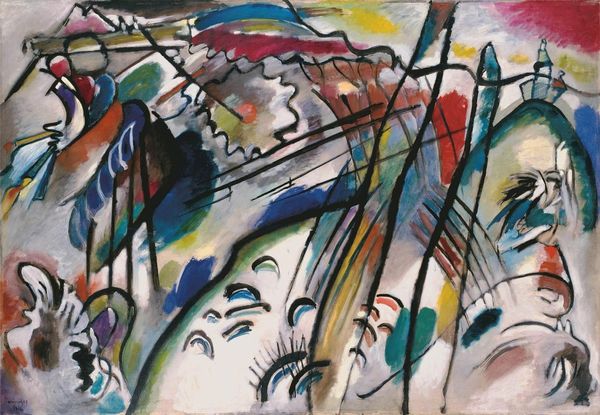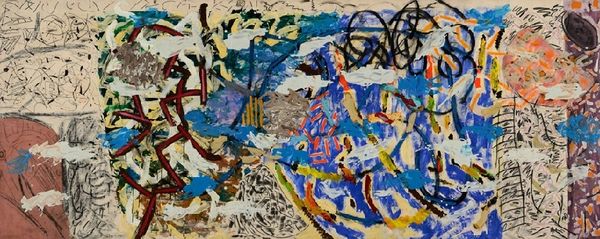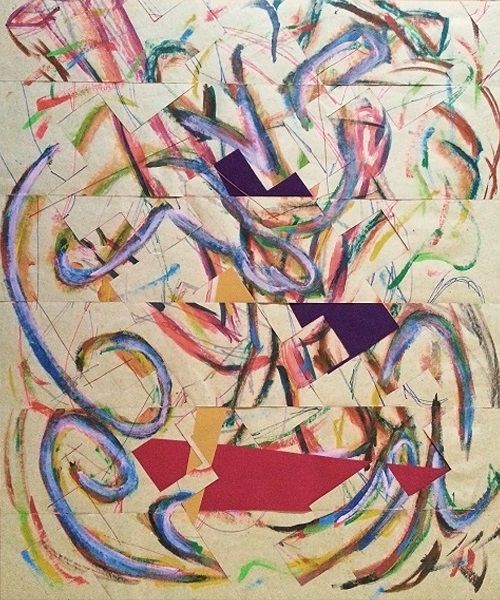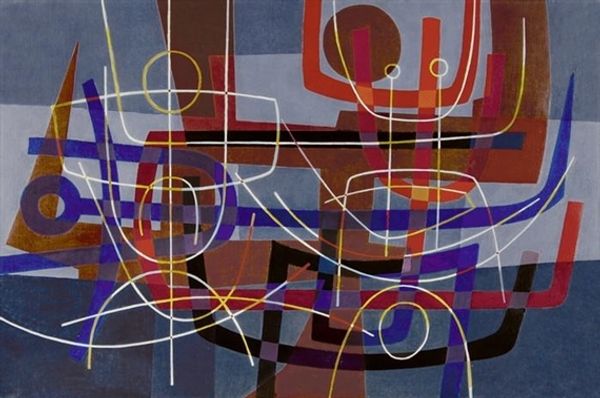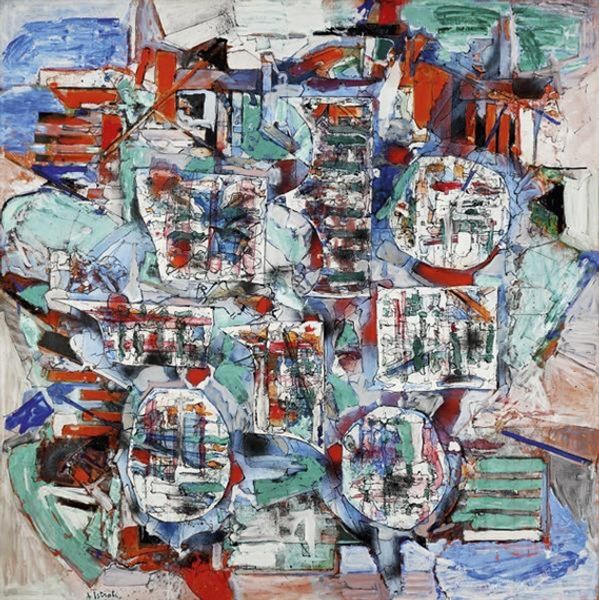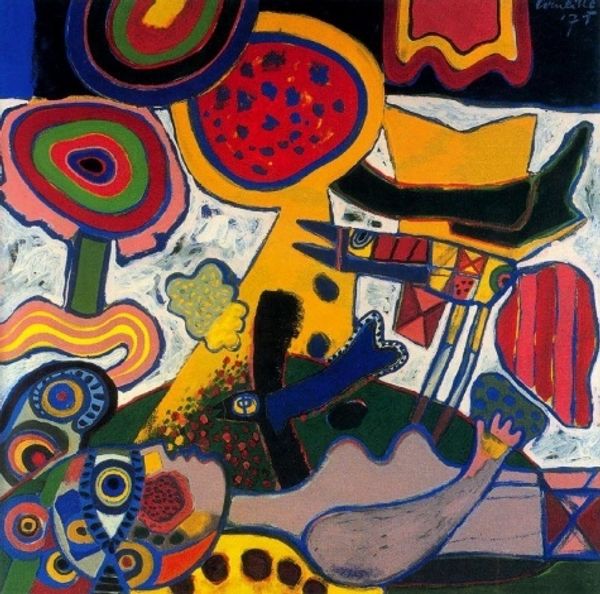
#
bay-area-figurative-movement
Copyright: Elmer Bischoff,Fair Use
Curator: Right now, we're looking at Elmer Bischoff's "#59", an acrylic on canvas he completed in 1981. Editor: My initial impression is of organized chaos. It feels like a puzzle that’s been deliberately scrambled, lots of activity fighting to get through. Curator: That's interesting, particularly considering Bischoff’s process. His abstract expressionist style really prioritized the physical act of painting, almost like a performative expression captured in acrylic and line work. This involved a great deal of layering and reworking, resulting in varied surfaces. Editor: Knowing the time it was made, I wonder what sort of tensions the artist was playing with in abstract form during the AIDS crisis? It's a reach, maybe, but those shapes, those blocked areas, feel so constrained. I read this as an era when personal freedom was being so powerfully restricted. There's this almost frenetic energy bursting beneath that tension. Curator: Well, consider his peers in the Bay Area figurative movement who were examining their experiences in relation to both form and representation. The layers of this artwork reveal process but they also echo social anxieties around visibility. But, to focus more specifically on materials, what kind of canvas was Bischoff working with and where did he procure his paints? I want to know how material constraints factored into his vision. Editor: And I think the broader question here is: for whom does visual art function? Who has the luxury to make aesthetic claims when access is not freely given? When this was shown initially, I imagine many folks in vulnerable social positions felt quite ambivalent. What value did this offer to the disenfranchised communities? Curator: Fair point. Abstraction isn't universally accessible. The work, and access to the work, has value in particular art markets. Still, Bischoff's material decisions reflect this intersection: mass-produced, accessible acrylic. Editor: Right. His commitment to process and experimentation are definitely apparent. Overall, this piece gives me plenty to chew on when understanding how the personal meets the political, especially as we reconsider visual art's purpose within shifting social contexts. Curator: Indeed, and how the making of it intersects with materiality available in culture itself. It certainly provokes more questions than it answers, and those questions continue to matter today.
Comments
No comments
Be the first to comment and join the conversation on the ultimate creative platform.


